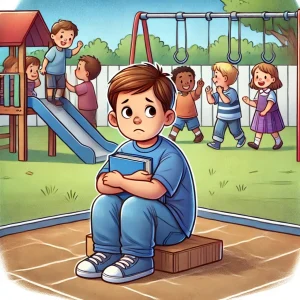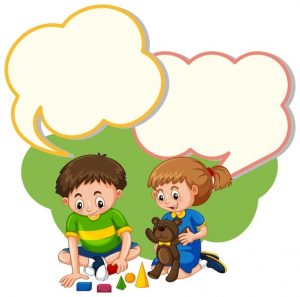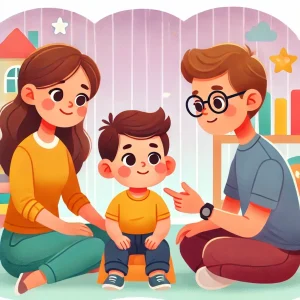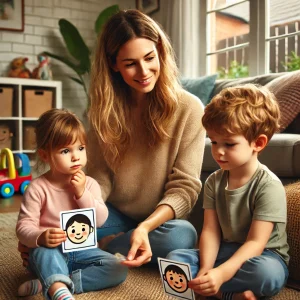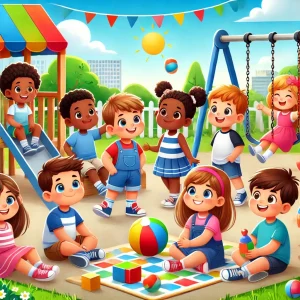Teaching Your Toddler the /l/ Sound: A Step-by-Step Guide
By Rajini D
Last Updated: April 1, 2024
Have you ever listened to your little one chatter away, only to notice some of their words don’t sound quite right? Maybe “lake” becomes “wake,” or “lion” turns into “wion.” It’s adorable, but as they grow, you know it’s something they need to master. If you’re nodding along, knowing exactly what I’m talking about, you’re not alone. Teaching children the /l/ sound is a common hurdle many parents face. But here’s the good news: it’s usually a simpler fix than you might think.
The /l/ sound is one of those milestones in speech development that can stump even the most articulate toddlers. It’s a common topic of concern among parents, but with the right approach, mastering it can be a smooth and even fun process. The secret lies in not overwhelming yourself or your child with too much information at once. Instead, focus on simple, engaging practices that make learning enjoyable for them and rewarding for you.
Understanding the /l/ Sound
Delving into the world of speech development, particularly the /l/ sound can seem daunting at first. Yet, understanding this aspect of your child’s growth is both fascinating and crucial. The /l/ sound, characterized by the tongue’s placement against the back of the upper front teeth, is one of the milestones in speech development that children typically begin to master around the age of 3 to 4 years. By the time they’re 5 to 6 years old, most children can pronounce this sound clearly in various word positions—beginning, middle, and end.
Why does this matter? Early intervention and practice in speech development are key to ensuring that minor hurdles don’t turn into persistent issues. It’s not just about correcting speech but fostering a child’s confidence in their ability to communicate effectively. Think of each sound as a building block in the rich tapestry of language your child is weaving every day. When one of these blocks wobbles, it doesn’t mean the structure is flawed. It simply means it’s time to provide a little extra support.
Preparing for Practice
Creating the Right Environment
- Keep It Fun: Remember, children learn best through play. Turn practice sessions into a game or a storytelling time. This keeps their interest peaked and removes any pressure to “get it right.”
- Stay Positive: Focus on the effort rather than perfection. Celebrate the attempts and progress, no matter how small. This positive reinforcement will encourage your child to keep trying.
- Routine But Flexible: Establishing a routine can help make practice a regular part of your day. However, be ready to adapt based on your child’s mood and energy levels. If today isn’t the day, it’s okay to try again tomorrow.
- Quiet, Comfortable Space: Choose a quiet corner where your child can focus without distractions. Make sure it’s a place where they feel comfortable and at ease.
- Mirror Practice: Use a mirror during practice. This visual aid can help your child understand how to position their tongue and lips, making the learning process more intuitive.
WellnessHub Approach
At WellnessHub, we believe in nurturing speech development by fostering an environment of encouragement and support. Our philosophy is rooted in understanding each child’s unique journey and providing resources that cater to their individual needs. We advocate for a balanced approach, blending fun with learning and ensuring that children are engaged and motivated throughout their speech development journey.
We understand that parents are the cornerstone of their child’s progress. That’s why we offer a range of resources, from expert articles to interactive tools, designed to empower you to support your child effectively. Our goal is to make speech practice a bonding experience filled with laughter and growth.
Creating a supportive environment for practicing the /l/ sound is more than just about the practice itself; it’s about building confidence, fostering a love for learning, and making each child feel valued and understood. At WellnessHub, we’re here to support you every step of the way, providing you with the tools and resources to make the journey enjoyable and effective for both you and your child.
Step-by-Step Guide to Teaching the /l/ Sound
Teaching your child to articulate the /l/ sound clearly can be a fun and rewarding experience. By breaking down the process into manageable steps, you can help your child master this important speech milestone. Let’s explore this journey together, from the very introduction of the sound to integrating it into full-fledged conversation.
Introduction to the Sound
Start with making the /l/ sound an interesting character in your child’s daily play. You might say, “Today we’re going to meet a new sound, the lovely /l/. It’s the sound we hear at the beginning of ‘Lion’ and ‘Lollipop’!” Use toys or storybooks featuring characters or objects that start with the /l/ sound to make this introduction engaging.
Finding the Right Placement
The key to producing the /l/ sound is the correct placement of the tongue. Here’s how you can guide your child:
- Mirror Magic: Stand in front of a mirror with your child and have them watch both of your mouths as you produce the /l/ sound. Point out how the tip of the tongue touches the alveolar ridge (the gum ridge just behind the upper front teeth).
- Touch and Tell: Use a child-friendly food item like peanut butter or a small piece of chocolate. Place a tiny amount on the alveolar ridge of your child’s mouth and encourage them to lick it off. This can help them find the right spot with their tongue.
- Tongue Depressors: Gently use a tongue depressor to guide their tongue to the correct position if they’re comfortable with this approach.
From Sound to Speech
Once your child is familiar with the tongue placement for the /l/ sound, it’s time to practice producing the sound in various contexts.
- Isolation: Start with the sound by itself. Encourage your child to make the /l/ sound on its own, focusing on the correct tongue placement.
- Syllables: Move on to attaching vowels to the /l/ sound, creating syllables like “la,” “le,” “li,” “lo,” and “lu.”
- Words: Practice the /l/ sound in words. Begin with words where the /l/ sound is at the beginning (like “lion”), then at the end (like “ball”), and finally in the middle (like “hello”).
- Phrases and Sentences: Construct simple phrases and sentences with the /l/ sound words. For instance, “I love lollipops” or “The lion laughs loudly.”
Interactive Activities
Make practice times lively and interactive with these fun activities:
- L Sound Scavenger Hunt: Create a list of items around the house that start with the /l/ sound and have a small treasure hunt.
- Articulation Art: Draw or paint pictures of objects that start with the /l/ sound. Each time your child adds a new picture to their collection, they say the word out loud.
- Singalong with /L/: Find songs or create your own that emphasize the /l/ sound. Singing together can be a joyful way to practice articulation.
- Story Time with /L/: Read stories together, highlighting and exaggerating the /l/ sounds in words. You can even try to tell a story using as many /l/ words as possible.
Each of these steps is a building block toward clear /l/ sound articulation. Remember, every child’s journey is unique, and some may progress quicker than others. What’s important is the encouragement and positive reinforcement you provide along the way. With patience, practice, and a dash of creativity, your child will be confidently using the /l/ sound in no time.
Making Practice Enjoyable
Transforming speech practice into a playful and enjoyable experience is key to keeping your child engaged and motivated. Let’s explore some creative game ideas that can help incorporate the /l/ sound in a fun way. Additionally, we’ll share how WellnessHub supports learning through enjoyable activities and resources.
Game Ideas
- “L” Bingo: Create bingo cards with pictures or words that start with the /l/ sound. As you call out the words or show the pictures, your child marks them on their card. The first to get five in a row wins a small prize or privilege.
- Lucky “L” Hunt: Hide small objects around the house or yard that start with the /l/ sound (e.g., a toy lion, a leaf, a ladle). Create a treasure map for your child to find them. Each time they find an item, have them say the word out loud.
- “L” Sound Charades: Write down actions, animals, or objects that start with the /l/ sound on slips of paper. Take turns drawing a slip and acting it out without speaking while the other guesses. This game not only focuses on the /l/ sound but also encourages non-verbal communication skills.
- “L” Word Crafting: With craft materials, create objects or animals that start with the /l/ sound. For each creation, your child must come up with a sentence using the word. This activity combines articulation practice with creativity and sentence formation.
Daily Practice Log Template
| Activities Done | Duration | Notes |
|---|---|---|
| Mirror Exercises, “L” Sound Bingo | 20 minutes | Enjoyed bingo, struggled with “lamp”. |
| Singalong with /L/, Articulation Art | 15 minutes | Loved drawing lollipops, good /l/ sound |
| “L” Sound Scavenger Hunt, Story Time | 30 minutes | Excitedly found all the items, pronounced “leaf” correctly |
| Repetition Practice, “L” Word Crafting | 25 minutes | “Lion” pronounced perfectly, used “lake” in a sentence |
WellnessHub’s Fun Tips
At WellnessHub, we believe learning should be an adventure filled with curiosity and joy. That’s why we offer a variety of resources and tools designed to make speech practice as enjoyable as it is effective. Here are some ways WellnessHub supports fun learning:
- Interactive Tools: Our website features interactive games and apps specifically designed to target speech sounds, including the /l/ sound. These tools are not only educational but also incredibly fun, ensuring your child remains engaged and eager to learn.
- Creative Resources: We provide creative activity ideas and printable resources that parents and children can use together. From colorful flashcards to engaging worksheets, these resources are designed to make practice time something your child looks forward to.
- Expert Tips: WellnessHub’s blog is filled with tips from speech therapists and child development experts on making learning fun. These articles cover everything from everyday activities to specialized exercises, all aimed at enhancing your child’s speech development journey.
Read more: The Early Years: Emotional and mental health is a concern for kids below five years.
Encouragement and Support
Celebrating Progress
Every small step forward is a leap in the journey of learning the /l/ sound. It’s crucial to celebrate these small victories, whether it’s the first correct articulation of a sound, the successful pronunciation of a difficult word, or a day of dedicated practice. These celebrations can be as simple as a high five, a sticker on a chart, or a special moment together enjoying a favorite activity. These positive reinforcements not only boost your child’s motivation but also reinforce their love for learning and confidence in their abilities. Remember, encouragement should be specific to the effort and progress made, highlighting the achievement: “I loved how clearly you said ‘lion’ today!”
Comparison Table: Before and After Speech Therapy
| Common /l/ Sound Errors (Before) | Corrected Pronunciation (After) |
|---|---|
| Wight | Light |
| Wuv | Love |
| Wion | Lion |
| Wollipop | Lollipop |
| Wisten | Listen |
| Weaf | Leaf |
| Wamp | Lamp |
When to Seek Help
While many children will master the /l/ sound with practice and time, some may benefit from additional support. Here are a few signs that it might be time to consult with a speech therapist:
- Persistence of the issue: If the /l/ sound continues to be challenging for your child beyond the expected age range of mastery (typically around 6 years old), it could be beneficial to seek professional advice.
- Frustration or avoidance: If your child becomes frustrated, upset, or avoids speaking due to difficulty with the /l/ sound, this could indicate that extra help is needed to overcome these challenges.
- Impact on communication: When pronunciation difficulties start to impact your child’s ability to communicate clearly or be understood by others, it’s a strong indication that additional support could be beneficial.
Conclusion
As we conclude our exploration into teaching the /l/ sound, it’s important to remember the powerful role you play in your child’s speech development journey. Your encouragement, understanding, and dedicated support create a nurturing environment that empowers your child to grow, learn, and express themselves confidently. Celebrating each step forward, no matter how small reinforces their progress and motivates them to continue striving toward clear and articulate communication.
For more guidance, resources, and professional support on this journey, WellnessHub stands ready to assist you. Our platform is a rich source of information and tools designed specifically to aid in speech development, offering everything from expert advice to interactive activities. We invite you to explore what WellnessHub has to offer, where we’re committed to supporting your child’s path to effective communication and overall well-being. Together, we can make the journey of speech development a rewarding and successful experience for your child.
Frequently Asked Questions:
1. At what age should my child master the /l/ sound?
Children typically master the /l/ sound by the ages of 3 to 6 years. This developmental milestone varies, so if your child is within this age range and struggles with the /l/ sound, it’s often normal. Early practice can facilitate mastery, but patience is key as each child progresses at their own pace.
2. How can I make practicing the /l/ sound fun for my child?
Making practice fun can be achieved through creative games, engaging storybooks, and interactive arts and crafts focused on the /l/ sound. WellnessHub provides a plethora of resources and ideas, such as /l/ sound bingo, scavenger hunts, and storytelling activities, designed to make learning enjoyable and effective for children.
3. What are some signs that my child might need speech therapy for the /l/ sound?
Consider speech therapy if difficulties with the /l/ sound persist beyond the typical age range (6 years), affect your child’s ability to communicate clearly, lead to frustration or withdrawal from speaking, or notice a significant delay compared to peers. Speech therapists can offer targeted strategies and support for overcoming these challenges.
4. How can I help my child with the correct tongue placement for the /l/ sound?
Teaching correct tongue placement involves showing your child to touch the alveolar ridge (just behind the upper front teeth) with their tongue tip. Using a mirror for visual feedback, placing a taste incentive like peanut butter on the alveolar ridge, or guiding their tongue with a clean finger or tongue depressor can make this learning process clearer and more tangible.
5. Where can I find professional help or resources for teaching the /l/ sound?
WellnessHub is an excellent starting point for parents seeking professional guidance and resources for teaching the /l/ sound. Our website features a wide range of tools, activities, and access to speech therapy consultations, all designed to support your child’s speech development journey from the comfort of your home, ensuring personalized and effective learning experiences.
6. Can mispronouncing the /l/ sound affect my child’s overall speech development?
While challenges with the /l/ sound are common and often resolved with age and practice, persistent difficulties should not be ignored, as they can impact overall speech clarity and confidence. Early intervention can prevent potential effects on broader speech development, ensuring your child develops strong communication skills.
7. What everyday activities can help improve my child’s /l/ sound pronunciation?
Everyday activities like singing songs that emphasize the /l/ sound, reading books aloud together that feature /l/ sound words, and engaging in conversations that encourage the use of /l/ sound words can significantly improve pronunciation. These activities integrate practice seamlessly into daily routines, making learning natural and fun.
8. How long does it typically take for a child to master the /l/ sound with consistent practice?
The time it takes for a child to master the /l/ sound varies greatly depending on the child’s age, the amount of daily practice, and individual differences in learning pace. With consistent practice, many children show noticeable improvement within a few months, but patience and ongoing encouragement are crucial.
9. Are there specific toys or tools that can help with teaching the /l/ sound?
Yes, there are speech therapy tools designed to help with articulation, such as tongue depressors and placement tools, which can assist with teaching the correct tongue position for the /l/ sound. Additionally, toys that encourage verbal expression, like talking dolls or interactive books with /l/ sound words, can also be beneficial.
10. How can I track my child’s progress with the /l/ sound?
Keeping a simple journal of daily practice activities and noting the words or sounds practiced can be an effective way to track progress. Recording your child’s speech during practice sessions and periodically reviewing these recordings can also provide tangible evidence of improvement over time, offering encouragement to both you and your child.
About the Author:
Rajini Darugupally
M.Sc., Speech-Language Pathologist (9+ years of experience)
Rajini is a passionate and dedicated Speech-Language Pathologist with over 9+ years of experience, specializing in both developmental speech and language disorders in children and rehabilitation in adults. Driven by a desire to empower each individual to find their voice, Rajini brings a wealth of experience and a warm, genuine approach to therapy.
Currently, at Wellness Hub, she thrives in a team environment that values innovation, compassion, and achieving results for their clients.
Connect with Rajini to learn more about how she can help you or your loved one find their voice.
Book your Free Consultation Today
Parent/Caregiver Info:
Client’s Details:
* Error Message



